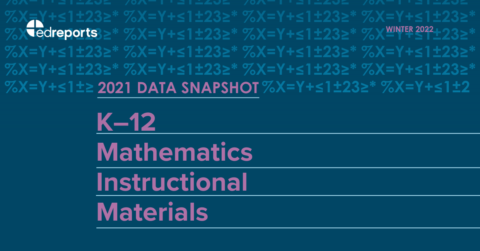SPOTLIGHT: How Do Students Engage With Mathematics in the Classroom?
Data reveals a need to rethink how districts implement instructional materials and support teachers to provide crucial mathematics learning.
Related Resources
article
Deep Dive: How Math Practices 5 and 6 Build Student Confidence and Ownership of Their Learning
The next installment in our series explores how Math Practices 5 and 6 help students approach problems with confidence and express their conceptual understanding with precision.
article
Deep Dive: How Math Practices 1–3 Help All Students Access Math Learning and Build Skills for the Future
Part one of our series on the Mathematical Practices focuses on why they matter for student learning, and the role high-quality instructional materials play in supporting teachers to incorporate them meaningfully into the classroom.
article
Data Snapshot: K-12 Mathematics Instructional Materials
Learn more about the availability and use of high quality K-12 mathematics curriculum in this new report.


